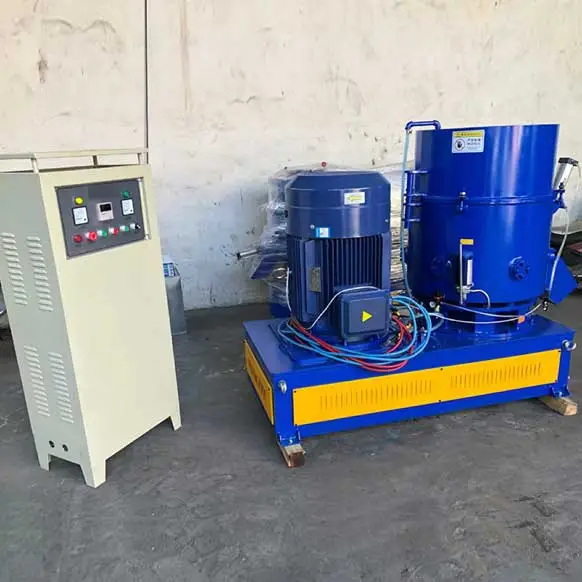
- > Search By Functions
- > Co-Extrusion
- > Search By Material
- > Search By Machines
- > Search By Machines
- > Search By Machines
What are you looking for?
Investing in a plastic recycling machine is a critical decision for businesses aiming to reduce waste, meet sustainability goals, or tap into the growing demand for recycled materials. However, the high upfront costs of industrial machinery can be a barrier, especially for startups and small-to-medium enterprises (SMEs). This article explores two cost-effective pathways—leasing and buying—to help you determine the best fit for your operational needs, budget, and long-term goals.

Leasing offers a practical solution for businesses seeking immediate access to recycling technology without significant capital expenditure.
Minimal Initial Investment: Avoid large upfront payments (often 10–20% of the machine’s total cost) by paying fixed monthly fees.
Access to Advanced Technology: Upgrade to newer models at the end of the lease term, staying ahead of industry innovations.
Maintenance Included: Many leasing agreements bundle servicing, repairs, and parts replacement, reducing downtime and hidden costs.
Tax Benefits: Lease payments may qualify as tax-deductible operating expenses (consult a financial advisor).
No Ownership Equity: You won’t build asset value over time.
Long-Term Cost: Total lease payments may exceed the machine’s purchase price over time.
Contractual Restrictions: Penalties for early termination or usage beyond agreed limits.
Ideal For: Startups, SMEs, or businesses testing recycling operations before committing to ownership.
Purchasing a plastic recycling machine outright provides full control and long-term savings, but requires careful financial planning.
Asset Ownership: Build equity and potentially resell the machine later.
Customization: Modify the equipment to suit specific workflows or material types.
Lower Lifetime Cost: Avoid recurring payments after the break-even point (typically 3–5 years).
Depreciation Benefits: Claim tax deductions on machinery depreciation (check local regulations).
High Initial Cost: Requires significant capital or financing.
Maintenance Responsibility: Repairs, parts, and labor costs fall on the owner.
Obsolescence Risk: Rapid technological advancements may render older models less competitive.
Ideal For: Established businesses with steady cash flow, long-term recycling goals, or specialized processing needs.
Leasing: Preserves capital for other investments (e.g., marketing, R&D).
Buying: Requires liquidity or loan approval but offers ROI over time.
Short-term or seasonal demand? Leasing allows scaling up/down.
High-volume, continuous recycling? Buying maximizes efficiency.
Is the machine likely to become outdated in 2–3 years? Leasing mitigates obsolescence.
Does the machine have a 10+ year lifespan? Buying may be more economical.
Scenario: A mid-sized packaging company wants to recycle post-industrial HDPE waste.
Leasing: Paid 1,500/month for a mid−tier machine. Upgraded after 3 years to a faster model with AI−driven sorting. Avoided 15,000 in maintenance costs.
Buying: Invested 80,000 upfront. Saved 12,000 annually after 5 years but spent $8,000 on repairs and upgrades.
Verdict: Leasing suited their dynamic needs, while buying would have locked them into older tech.
What’s my budget? Can I afford a down payment, or are fixed monthly fees better?
How urgent is my need? Leasing provides faster access.
Will my recycling needs evolve? Flexibility vs. stability.
What’s the machine’s expected lifespan? Align with your business horizon.
Leasing: Negotiate maintenance terms, upgrade clauses, and early exit options.
Buying: Seek bulk discounts, extended warranties, or supplier financing.
Both: Compare multiple vendors and read reviews.
There’s no one-size-fits-all answer. Leasing shines for flexibility and cash flow management, while buying pays off for stability and long-term ROI. Assess your financial capacity, operational scale, and growth projections to make an informed decision.
Next Step: Use Cost Calculator Tool to compare leasing vs. buying over 5 years, or contact our experts for a personalized consultation.
Final Thought: Whether you lease or buy, investing in plastic recycling technology is a step toward sustainability—and a competitive edge in the circular economy.